Memecoin season is taking its toll on cryptocurrency networks. With increases of more than 4,000% in just one month, these “shitcoins” are topping exchanges, causing networks to become saturated, both Bitcoin and Ethereum.
The cryptocurrency Ethereum, developed by Vitalik Buterin, has already experienced this situation. In 2021 he suffered what was called within the ecosystem as defi mania. Decentralized finance platforms broke records, not only in assets mobilized, but also in commissions. For this year on Ethereum, Average network fees were around $71. In some individual cases they have far exceeded this number.
Although Ethereum has already done so lively This type of situation is motivated by either tokens or decentralized platforms Bitcoin’s fall is a novelty due to the origin of the congestion. In 2021, Bitcoin suffered one of the worst shortages in its history with average commissions hovering around $62. However, the motivation lay in the all-time high of its price above $67,000. Now the situation is different, the memecoins have arrived at bitcoin.
In February of this year, the Ordinals protocol became popular, a system that allows the creation of non-fungible tokens (NFT) that are 100% denominated in Bitcoin. As a result of this protocol, the BRC-20 was born, a system of tokens based on ordinal numbers. And through these came memecoins to bitcoin, whose popularity has saturated the network.
What are memecoins
Meme cryptocurrencies, or memecoins, are crypto assets whose only function is to be a meme. There is generally no innovative or relevant technology behind it, nor issuance of monetary policies; some actually have infinite emission. This makes them purely speculative investments. His only reason for being: being a meme. These types of coins are sometimes referred to as shitcoins.
The main proponents behind this “movement” are Dogecoin (DOGE) and Shiba Inu (SHIB), two memecoins alluding to the dog breed Akita, known from the movie Hachiko.
DOGE is one of the oldest cryptocurrencies in existence as its inception dates back to 2013. Unlike Bitcoin, Dogecoin is an inflationary cryptocurrency; It has no emission limit. However, her popularity exploded in 2022 when Tesla CEO Elon Musk started talking about her via Twitter. even calls himself “CEO of Dogecoin”resulting in DOGE increasing its price significantly.

Now the pups appear to have been left behind as the new queen is PEPE, a memecoin that has snuck up 42nd place among cryptocurrencies with the highest market capitalization. Recently, the market capitalization mark of 1 billion US dollars was even exceeded.
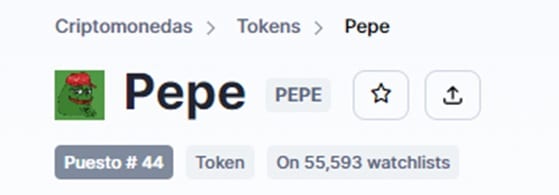
PEPE refers becoming quite a famous figure within the cryptocurrency community. For Bitcoin, the Rarepepe, NFTs based on caricatures of these characters, were the first non-fungible tokens to hit the parent network.
Along with PEPE, other memecoins are picking up bullish momentum. Binance recently announced that it would list PEPE and FLOKI, another memecoin, which will increase the price of both by 80% and 60% respectively.
Why memecoins are saturating Ethereum
In the case of Ethereum, in order to understand the phenomenon, it is first worth noting that both PEPE and FLOKI, the currently most important memecoins, They are Ethereum tokens. Therefore, its high demand directly affects this network.
An example of this is how in the last 24 hours according to CoinMarkecap, PEPE is positioned as the seventh cryptocurrency with the highest trading volume. There are a total of 4 memecoins in the top 20 trading volume over the past day.
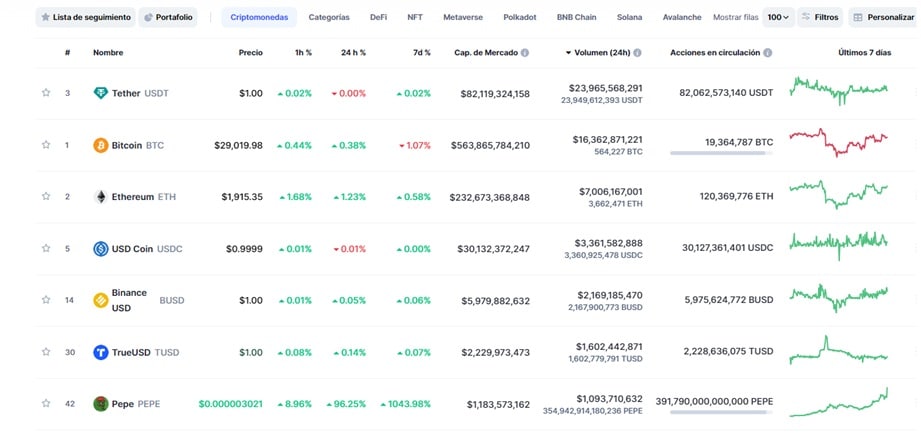
This high level of interest leads directly to saturation as more people buy and sell these memecoins. An example of this is Uniswap, the main decentralized exchange (DEX) used to obtain PEPE. shows that this memecoin is positioned as the third highest volume of exchanges in the last 24 hours behind only Ether (ETH) and USD Coin (USDC).
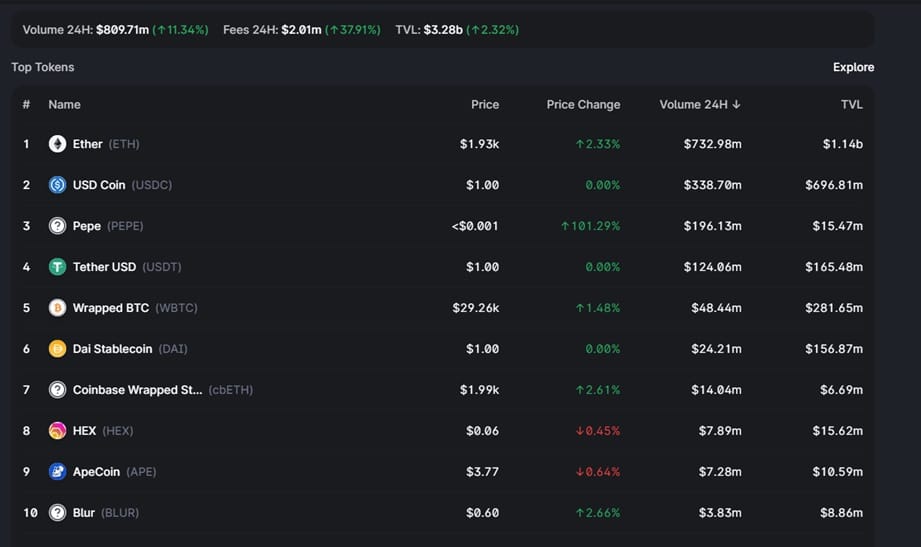
The reason why PEPE trades or any other coin saturates Ethereum is because of the way trading is done. Every time Uniswap decides to swap a currency (Memecoin or not), a transaction is generated for the network. A higher trading volume means a higher number of transactions on the networkhence more traffic jams.
The saturation of bitcoin by memecoins is a special case
Until last year, the use of tokens in Bitcoin was only possible via counterparties, a protocol used by the Bitcoin network to create its own token system, and from which the rarepepes originate. However, these never caught on like the BRC-20 does today.
Each time a BRC-20 is created or traded an ordinal number is generated that saves a file in JSON format about the transaction data. This uses bitcoin as a general database for storing information.
Uploading a text file via Ordinals to Bitcoin compares very cheaply to uploading an image. This, along with the way the BRC-20s are being used and growing in popularity, has resulted in the network becoming saturated.
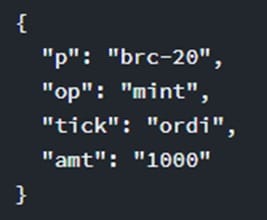
But what do memecoins have to do with BRC-20? We previously commented that most popular memecoins belong to Ethereum, However, unofficial copies have been made in Bitcoin using the BRC-20 using the same tickers and have become very popular in the markets for these tokens.
It must be taken into account that although memecoins are unofficial tokens, they are intended to be a meme, which is what prompted PEPE to do so within the BRC-20 market is listed as the second token with the highest market capitalization.
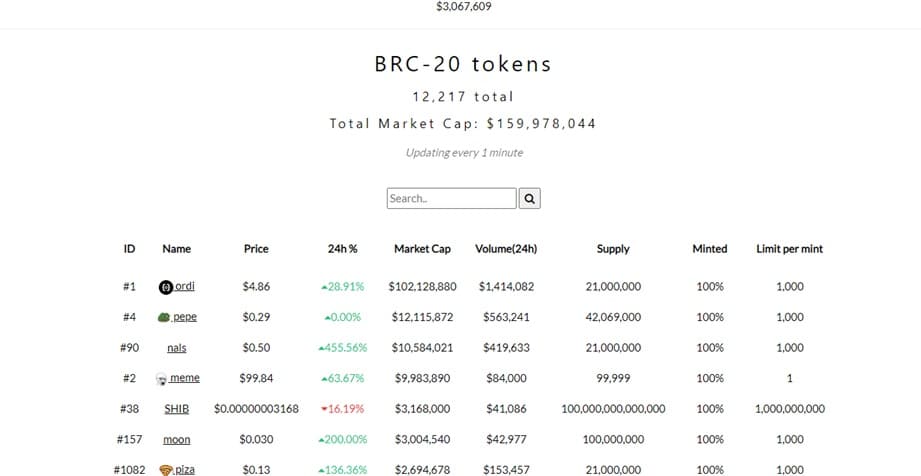
Although it is an unofficial PEPE token, it is worth remembering that memecoins serve no special function apart from being speculative, and that is exactly what PEPE’s BRC-20 does in Bitcoin.
Red Lightning and Rollups as a solution to the saturation
At the moment, the network is still congested and the issue of commissions could intensify. However, there are solutions that you can use to move BTC and ETH cheaply, and they are second-layer scalability solutions, like the Lightning Network in Bitcoin and Rollups in Ethereum.
In comparison, Ethereum costs around $10 per transaction, while rollups like Arbitrum have fees around $0.6.
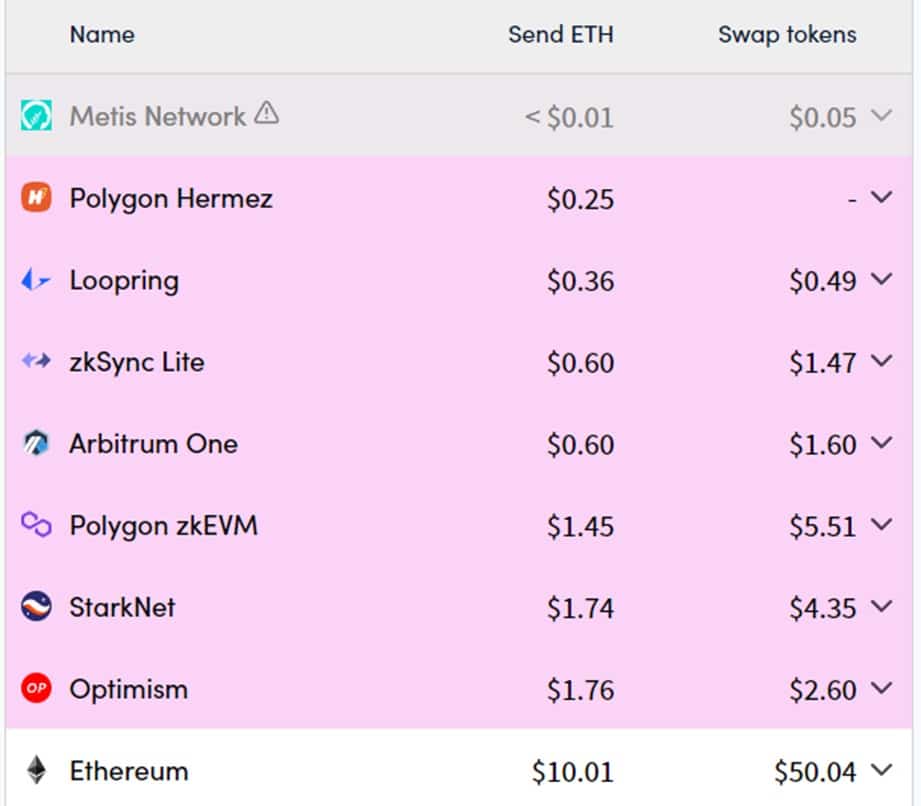
For Bitcoin, the Lightning network is a clear solution; instant deliveries and commissions from just pennies.
Although they are solutions to the saturation problem, both are relatively new technologies, for the most part not yet adopted by companies within the ecosystem such as exchanges or wallet developers.